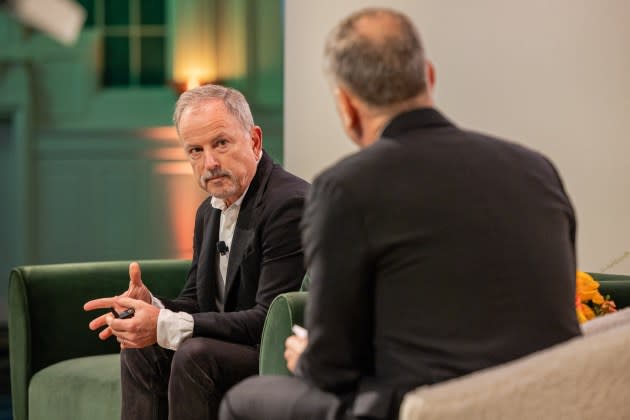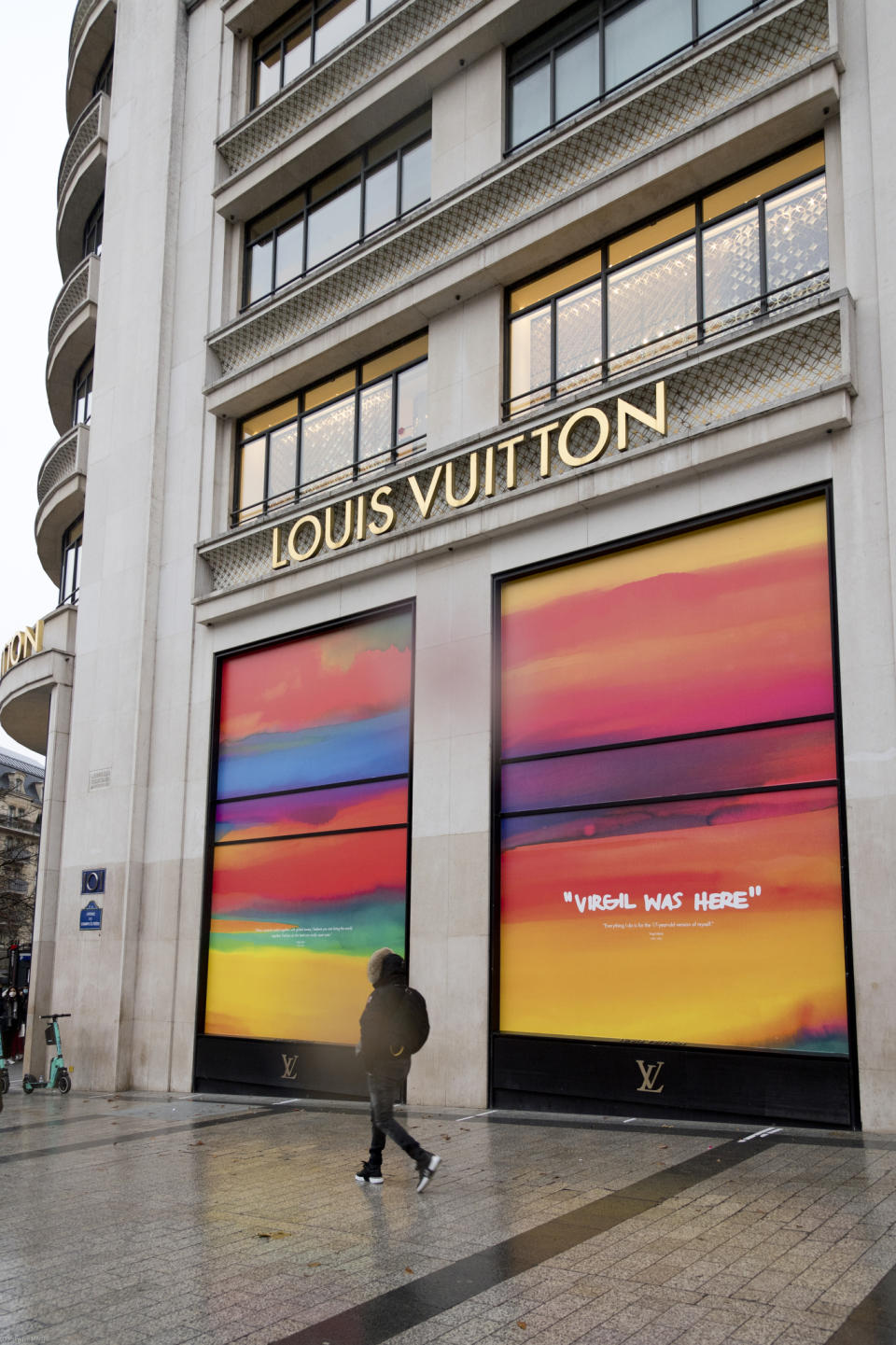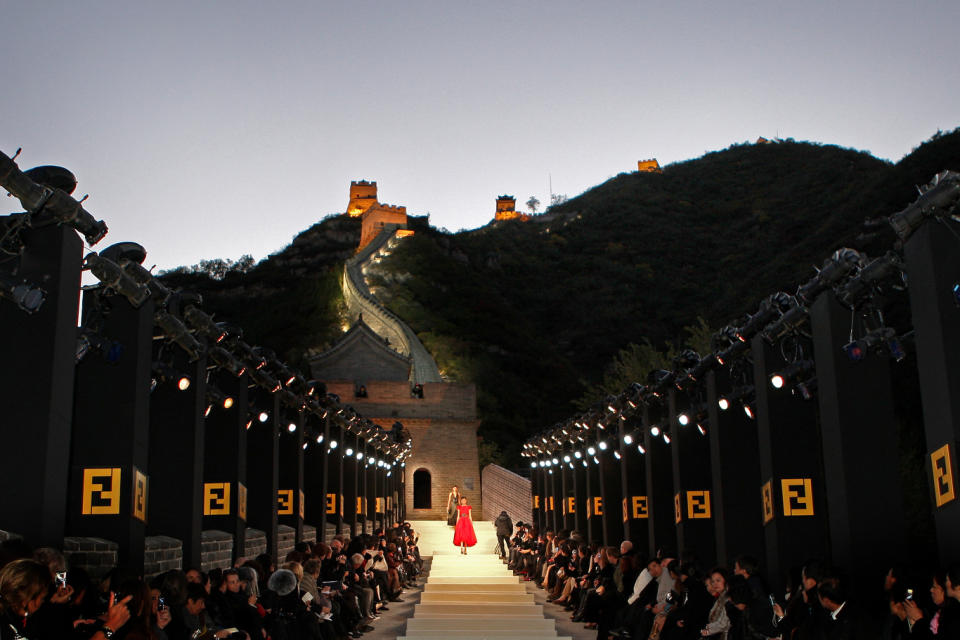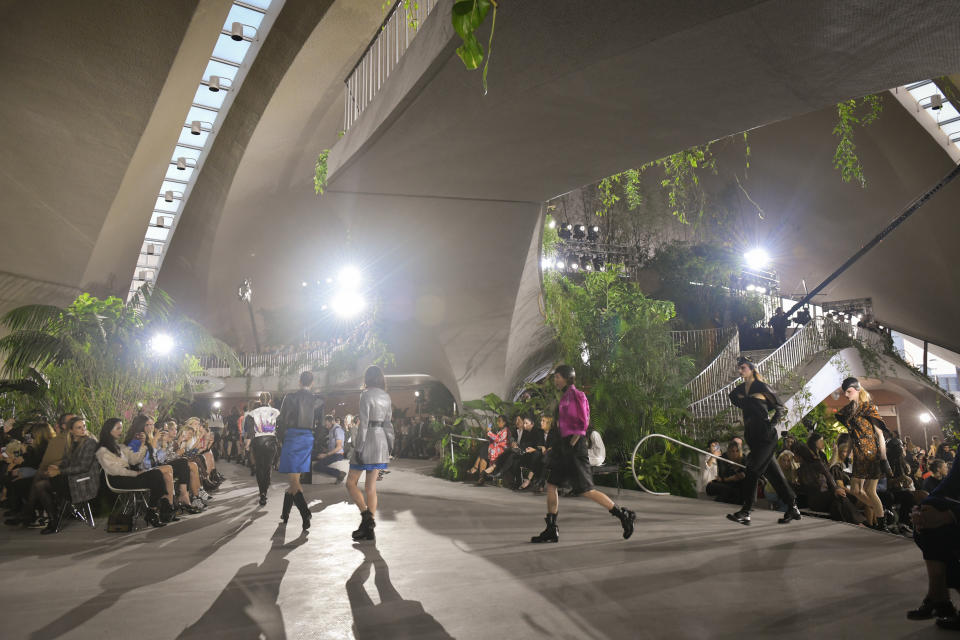Michael Burke on Leading Louis Vuitton Into the Future
- Oops!Something went wrong.Please try again later.
- Oops!Something went wrong.Please try again later.
- Oops!Something went wrong.Please try again later.

What is really important in driving a storied luxury brand into the future?
It appears Michael Burke, chairman and chief executive officer of Louis Vuitton, has the answer, having successfully led Vuitton, the world’s biggest fashion and leather goods brand, since 2013 after spearheading Dior, Bulgari and Fendi, and garnering the trust of Bernard Arnault, chairman and CEO of LVMH Moët Hennessy Louis Vuitton. So much so that WWD this year recognized Burke’s career with this year’s Edward Nardoza CEO Creative Leadership Honor.
More from WWD
EXCLUSIVE: Michael Burke, Sidney Toledano Take New Roles at LVMH
EXCLUSIVE: Dior Relaunches 20-year-old Chiffre Rouge Men's Watch Line
“What should be thrown away and what should be kept? When you run a brand like Louis Vuitton, you have to go digging and find what is really, really important,” Burke said in a conversation with Miles Socha, WWD editor, international. “I always say that when you come to a new brand as a CEO, within the first five years the important thing is to figure out what you are going to keep and what you are going to throw away.
“I typically say you have to throw away half and keep the other half. But the trick is knowing which half is crucial and that’s not easy — only your gut can tell you. Sometimes what you think you need to keep is really not that necessary, and what you think you have to throw away, maybe that’s exactly what you keep. It sounds easy but it’s a very tough formula, and very difficult to get it right.”
Burke over the past year has had to navigate through the sudden death of Virgil Abloh at age 41 in November 2021 and the search for a successor as artistic director of menswear at Vuitton is ongoing.
But the executive was adamant that this will take time and rushing is counterproductive.
“We are not trying to replace Virgil, not because he is irreplaceable but because he is unique. If we could find a Virgil as he was the day he died, it would be the wrong thing to hire that person,” Burke elaborated. “I hired Virgil four years prior and he was not the person that he was when he died.” He warned against generally trying to find “a copy of the person that left, instead of finding the person as he or she was when they were hired. To replicate that person is impossible and wrong.”
Time allows one to have a clearer view of what is necessary and for potential successors to express themselves. “We need someone today different from what Virgil was when he passed away, and that takes some time and improves the odds for the successor. Trust me, succeeding Virgil, Karl [Lagerfeld] or anyone of that stature is extremely difficult, but with the passage of time it makes it less difficult for the successor to establish what they want to say and that requires some space.”
He then added jovially, “We haven’t solved it yet, so don’t ask me that question.”

To be sure, Burke on stage was open to easy banter and his insightful comments caught the interest of the audience — commanding attention as he first walked on stage and swiftly laid down on the couch as in a psychoanalytic therapy, eliciting a round of laughter from the room.
He addressed the theme of the Summit, “An Era of Agility: The Path Ahead” and said creativity is as important as agility.
Pointing to a photo of a Louis Vuitton ad campaign showing a trunk with legs sticking out in front of Mont-Saint-Michel in Normandy, France, he said: “When Virgil came, this is what he found,” and the tidal island and the monastery are a “visual way of depicting resilience,” surviving constant attacks by the British, who “failed miserably.”
Burke said Abloh “had to figure out what to keep and what to disrupt. We need agility throughout the entire organization, but creativity at the same time, it’s very important. Creativity without agility can be trendy and creativity is not supposed to be trendy so you need to handle both values, which can be contradictory, but if done well they support each other. I think a great deal of Virgil’s success was understanding these simple facts and that one picture.”
Abloh’s first ad campaign with children flying kites and a Black child — incidentally a girl, Burke revealed — wearing an oversize sweater “were 100 percent Louis Vuitton, they had nothing to do with fashion, that would come later. It had to do with what he found when he came to Paris,” contended Burke. “When I hired Virgil, he was a baby in our business, yet, he filled out that sweater. I like to hire someone that has to fill the sweater and shoes over time.”
He spoke of working with designers and how important it is to create “partnerships” with them, in “co-leadership and co-direction on a very intimate basis, getting to know them, and understanding what the other person is trying to accomplish,” even having disagreements.
“The first year with Karl was atrocious; he wanted to have me fired at Fendi. He was not happy and he was very proud of having fired my predecessors, he had trophies on the wall — metaphorically,” recalled Burke of his arrival at the Rome, Italy-based company in 2003, when it “was technically bankrupt.”
“I was getting involved and I needed certain things to change in the studio and he didn’t appreciate that. He had to understand why Bernard had sent me there, what was needed and I was trying to understand why, while he was widely successful at Chanel, Fendi was sleeping, clearly not a success. He had to up his game and it took a lot of couches, and understanding the other person, coming up with a game plan that worked for both and creating a tremendous amount of trust.”
He confided he had “a bit of an advantage” growing up in Germany, as Lagerfeld’s “dirtiest jokes were all in German and I would be the only one laughing, which gave me a bit of a leg up. You’d be amazed how small things like that count.” The duo famously turned Fendi around and Burke moved on to Bulgari at the end of 2011.
But before that, Burke succeeded in staging a major and audacious fashion show on the Great Wall of China in 2007. Lagerfeld “fought me tooth and nail, he didn’t want to go to China, his visa requests had been turned down many times, he had never been to China, never shot a campaign there. There was a moment when he was negative, eating too many hamburgers, he had gained weight and he was very aggressive, saying things the Chinese government did not appreciate. He was persona non grata, but I got him the visa, so I know his exact age for having seen his passport,” he joked.
Due to a sandstorm, the show was postponed to November 2007 from May that year, just before the Olympics, and Burke recalled how happy Lagerfeld eventually was about it. “’You were right,’ he told me and from then on it was a love affair with us.”

Likewise, when Burke and Nicolas Ghesquière, helming the women’s collections at Louis Vuitton, chose the TWA Flight Center at New York City’s John F. Kennedy International Airport for the brand’s cruise 2020 show, the designer was thinking of a “chi-chi ‘60s lounge with few people and I am thinking JFK — thousands of people,” he said, reaching out with his arms for effect. In the end, a certain area of the location had “a lounge feeling,” but students from the Fashion Institute of Technology and the New School’s Parsons School of Design were invited and “made a lot of noise,” and Ghesquière concurred with Burke on that decision. “He told me I was right, but many times I tell him he was right and that’s how you develop a two-way trust. It’s the most amazing thing in our corporate jobs having this type of relationship, when you don’t even need to finish each other’s sentences, but it takes time.”

Within the organization, Burke is often also in no rush to fill a managerial position.
“The best surprise in our corporate lives is when someone rises to the occasion inside your existing team, and there needs to be some room. Raising one’s hand to succeed someone is difficult, especially if that position is highly visible. I say let them develop the courage to say ‘I want that,’ without the pressure of being nominated.” As an example, he said that for the first time, a woman is now head of Vuitton’s French factories, overseeing 9,000 employees and 19 plants. “That person did not raise her hand, I had to prod her,” as she did not have the typical background for the position.
“It took six to nine months for her to build up the confidence to ask, and for the organization to accept that for the first time a woman was in that role. Had we put someone there immediately we would not have the person we have today,” said Burke, also underscoring that he has “an issue with the word manage, you don’t manage people, but processes or payment systems. You lead people or better yet you get out of the way and let them run.”
Responding to a question about growth potential, Burke underscored that this is “not based on size, but on being complete and having all important touch points in place. This is really due to our phones, because today we know everything, but just 10 or 15 years ago, you didn’t have to be great in everything. Today, if you are weak in certain aspects, it’s going to be glaring and it will impact your growth potential.”
In fact, he noted how there are many small companies that are growing extremely fast, citing, for example, Loewe and Jacquemus. “I really don’t want people to walk out of here thinking that you have to be big to have growth. There was a time when people thought that there was a limit to the size you could be in luxury. I don’t subscribe to that at all.”
He also contended that, despite “the horrible news,” the pandemic and the wars, “the world is a better place today than 50 or 100 years ago. There is no better time than today. We have it good, and that creates wealth. If you look at the size of the wealth today and the amount of penetration of those luxury companies, that wealth is not bigger today, the pie just got much, much bigger.”
Asked about digital versus physical retail, Burke said he has always been “very vocal about the fact that I don’t know what that means, and I am not interested in this. It’s totally useless, at least for me, it’s as if saying how much was billed or paid online. Digital is about engagement, having a relationship online, constantly connected, this is important, not how many people paid online. Is our relationship sufficiently online when our client wants it to be online?” This is what matters to Burke, who believes “stores should be cashless areas of pure delight, dreaming and relationships, the physicality of paying ranks not high on the list of what we like doing. One hundred percent of our business is physical and 100 percent is digital; every client is connected with us both ways, we do both all the time.”
Burke sees stores of the future as “venues, experiences, restaurants on the top, bar, event spaces for fashion shows, re-sees and cultural events, art from the Fondation Louis Vuitton,” showing slides of the recent flagships in Seoul, South Korea, and Tokyo and Osaka, Japan, all opened in the last year and a half. “These cultural hubs are a clear indication of what we think about the future. They are marketplaces that fulfill many desires, we don’t care if physical or digital.”
And what about the successful 40-year run with Arnault? Burke concluded with a metaphor. “When I met my future wife Brigitte, we dated for some time and just before the wedding her uncle called me aside, and asked me if I wanted a long and happy marriage with his niece. ‘Of course,’ I said, and he suggested the next day I should ask her the same question and say that, once married, she was going to make all of the small decisions and me all the big decisions. We’ve been married 44 years and never made a big decision,” he concluded, smiling.
Best of WWD

